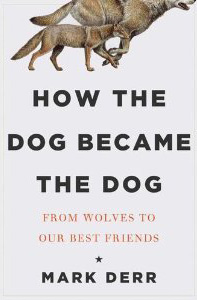Bobcat Goldthwait’s “God Bless America”
January 29, 2012
Let me begin by saying that I know killing people is wrong. And bad. I hardly ever do it. But no one who is human can claim to never having felt that dark impulse.
However, watching people being killed in films or in video games is good for you. Studies show that it promotes gum health and fights gingivitis. It makes you more productive at work. Food tastes better, too.

So if you want tastier meals and healthy guns, I suggest you watch this red band trailer for Bobcat Goldthwait’s new movie “God Bless America.” Please note that it is not suitable for children or the easily offended. Even though for some reason children under the age of 18 are allowed to act in movies that they could not attend.
Steve Jobs Died Because of “Magical Thinking” – Reality is Unforgiving
January 20, 2012
The brother of a close friend thinks I’m a jerk because I tried very hard to present evidence to him that acupuncture is simply magical thinking with no basis in science. I mean, of course, I am a jerk, but not for that reason.
In attempting this, I was going against the very good advice of W.C. Fields (“Never wise up a chump”). I also pissed off a veterinary orthopedic surgeon and some Labrador rescue folks over the same issue last year (as we struggle to deal with our dog, Huxley’s hip dysplasia).
Often when I tell people to 1.) Not take my word and 2.) Look at the evidence, I’m told in response, what’s the harm? If somebody wants to believe in Chinese energy healing from the ancient past, who is really hurt?
I just finished the excellent Walter Isaacson biography of Steve Jobs and it seems clear to me that Jobs died because he didn’t take his [Western] doctor’s advice. If he had promptly done what was medically recommended, he likely would’ve lived much longer and gone on to die of something else. All quotes are from Chapter 35.
During a routine kidney check-up in 2003, doctors found a shadow on Job’s pancreas. Further investigation revealed it to be a tumor. His pancreatic cancer could have been excised when it was an islet cell. According to his doctor, “[it] could be removed before it had definitely spread.”
“To the horror of his friends and wife, Jobs decided not to have surgery to remove the tumor which was the only accepted medical approach.”
Instead, Jobs kept to his strict vegan diet, adding large quantities of fresh carrot and fruit juices.
“To that regimen he added acupuncture, a variety of herbal remedies, and occasionally a few other treatments he found on the Internet or by consulting people around the country, including a psychic. For a while he was under the sway of doctor that stressed the use of organic herbs, juice fasts, frequent bowel cleansings, hydro-therapy and the expression of all negative feelings.”
“His friends repeatedly urged him to have the surgery and chemotherapy. ‘Steve talked to me when he was trying to cure himself by eating horseshit and horseshit roots, and I told him he was crazy,” [Andy] Grove recalled. [Art] Levinson said that he ‘pleaded every day’ with Jobs and found it ‘enormously frustrating that I just couldn’t connect with him.’ The fights almost ruined their friendship. ‘That’s not how cancer works,’ Levinson insisted when Jobs discussed his diet treatments. ‘You cannot solve this without surgery and blasting it with toxic chemicals.’ Even the diet doctor Dean Ornish, a pioneer in alternative and nutritional methods of treating diseases, took a long walk with Jobs and insisted that sometimes traditional methods were the right option. ‘You really need surgery,’ Ornish told him.”
” ‘I think Steve has such a strong desire for the world to be a certain way that he wills it to be that way,’ Levinson speculated. ‘Sometimes it doesn’t work. Reality is unforgiving.’ ”
“In the past he had been rewarded for what his wife called his ‘magical thinking’ – his assumption that he would will things to be as he wanted. But cancer does not work that way. [Laurene] Powell [his wife] enlisted everyone close to him, including his sister Mona Simpson, to try and bring him around. in July 2004 a CAT scan showed that the tumor had grown and possibly spread. It forced him to face reality.”
Maillardet’s Automaton – A Real Life “Hugo”
January 13, 2012

If you’ve seen Hugo, the Martin Scorcese-directed adaptation of Brian Selznick’s marvelous children’s book The Invention of Hugo Cabret, you’re already familiar with the 18th century passion for automations: mechanical wonders that mimicked the behaviors of dancers, magicians, circus acrobats, fortune tellers and more. They were far more than children’s wind-up toys. These automatons were clockwork mechanisms made for royalty and the very rich that were capable of astonishing, if limited, performances.
The “Draughtsman-Writer” above was built by Henri Maillardet and is capable of reproducing four drawings (an example is below) and three poems. Click here to see videos of this amazing machine in action at the Franklin Institute.

Zombies: Infographic
January 12, 2012
In 2011, Mexico City held the world’s largest zombie walk with 9,860 registered marchers. The event was held, in part, to collect donations for a local food bank. This broke the previous record set in Asbury Park, NJ in 2010 where they gathered 4.093 zombies. I’ve written about Zombie Walks before. Now here’s an infographic about zombies and the walks held to celebrate them . . .click on image for larger size.
The WordPress Journey: Infographic
January 12, 2012
Obviously, I’m a fan of WordPress for content management and as a modular way of creating websites with advanced functionality. Here’s an infographic that gives on overview of WordPress’ development. . .click on image for larger size.
How Memory Works: Infographic
January 12, 2012
For many years I’ve been fascinated by workings (and failings) of human memory. If not for the continuous autobiographic stream of our memories, how would we know who we are? Can we always rely on our memories to be an accurate record of our past?
The best single volume reading on the topic has to be Daniel Schacter’s Searching for Memory: The Brain, the Mind, and the Past. I’d also highly recommend Eric R. Kandel’s book, In Search of Memory, which I’ve previously written about.
For a quick overview, here’s an excellent infographic from OnlineColleges.net on the subject. . .click on image for larger size.
America’s Pet Frenzy: Infographic
January 12, 2012
As a graphic designer I admit to a passion for infographics that may not be shared by others. But this is my bully pulpit, and here is the first of four posts featuring, well, you know. . .click on image for larger size
The History of Digital Photography – Extreme Tech
January 12, 2012
As the news that Kodak may disappear as an iconic American brand is in the financial headlines these days, I thought it was worth highlighting a history of digital photography put together by Sebastian Anthony of ExtremeTech.

Since Kodak brought the first digital SLR to market in 1991 (at a retail price of $30,000) it’s hard for an outside observer, like me, to understand how they could have fallen so far behind the curve in a market that they could’ve owned.
Although some companies never do seem to get the memo that says, Adapt or Die.
In fact, a close friend of mine – a skilled amateur photographer who worked for a professional film processing lab – told me back in 2000 that film would never be replaced by digital, due to the relative poor resolution of the then-current crop of digital point and shoots. Today, he shoots digitally (of course) and the company he worked for no longer exists.
For me this is an example of how even knowledgable professionals are shockingly poor at making predictions in their own fields. The views of most pundits are not any more accurate than a coin flip. (Except, of course, for this guy I know who picks stocks. He knows how to beat the Street. See, he’s got this system. . .)
Carli Davidson – Canine Photography
January 12, 2012

I’m no fan of “cute” canine photography, just as I am no fan of dogs in Halloween costumes. Alright, maybe something minimal like a jester collar with bells but anything more elaborate than that always convinces me that the dog in question is uncomfortable and embarrassed for its owner’s lack of taste. So you’ll never find links with images like that on this site. However, I do believe that dog portraiture can be all that human portraiture is; photographers like Amanda Jones provide ample proof of that, in my opinion.
Today, I’d like to call attention to Carli Davidson, a professional photographer whose work has appeared in Vanity Fair, the Village Voice and Rolling Stone. She’s also an amazing photographer of dogs. I’d like to draw attention to just two of her outstanding photo galleries: Shake with images of dogs (and one cat) shaking off water and Pets with Disabilities. Nothing cute here, just great photography that happens to be about dogs.

How the Dog Became the Dog – Mark Derr
January 12, 2012
 For those of you who follow the ongoing debate about the evolutionary origin of dogs Mark Derr‘s new book, How the Dog Became the Dog: From Wolves to Our Best Friends is essential reading. The take-away is that the latest evidence casts doubt on the previously accepted dates for the emergence of the dog from the wolf. Derr makes the case that there was co-evolution of primitive man and wolf into modern man and domesticated dog. This is the track that Temple Grandin also posits in her recent book, Animals Make Us Human: Creating the Best Life for Animals.
For those of you who follow the ongoing debate about the evolutionary origin of dogs Mark Derr‘s new book, How the Dog Became the Dog: From Wolves to Our Best Friends is essential reading. The take-away is that the latest evidence casts doubt on the previously accepted dates for the emergence of the dog from the wolf. Derr makes the case that there was co-evolution of primitive man and wolf into modern man and domesticated dog. This is the track that Temple Grandin also posits in her recent book, Animals Make Us Human: Creating the Best Life for Animals.
The reasons for this are complex and Derr has a great ability to probe the archeological record and question the assumptions of previous researchers. Every modern book on dog evolution cites the work of Dmitry Belyaev with the Russian Silver Fox. In breeding for “tameness” over many generations for 40 years Belyaev reported physical changes in his foxes: body shapes altered in size and proportion, coats became piebald, tails became curled, ears floppy and increased cyclical rates of reproduction. Wild female foxes mate once a year, their cycle is cued by changes in daylight. Dogs can mate and bear young in any season, and more than once each year.
These results are said to make the case for primitive man selecting the tamest of wolves that followed their campsites and slowly transformed them into the domestic dog. Derr explains some of the problems with making this connection and challenges its explanatory power. In this he is making a counter-argument to the ground breaking work of Raymond and Lorna Coppinger in their book, Dogs: A New Understanding of Canine Origin, Behavior and Evolution. I think Coppinger makes an excellent case for his view and also consider his book essential reading, without knowing truly who is right in this debate.

Both would agree, I think, that domestication of the wolf into the modern dog was not an event which occurred only once or in a single location. The facts suggest a more complex and less straightforward process. It may even be the case that we will never know precisely how this all played out after the last of the Ice Ages. But Derr makes a major contribution to the conversation with his new book.





